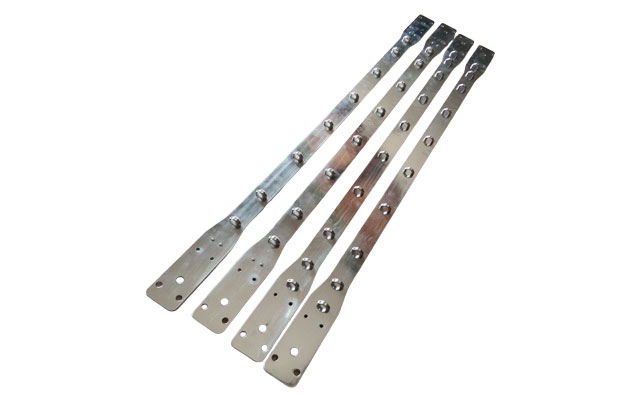Stranding Bow
Stranding Bow is the core component of a stranding machine, used to guide and position multiple strands of wires during the manufacturing process of cables, ropes, or metal strands, ensuring uniform stranding with specific lay lengths and directions.
Core Functions
Guiding Effect: Controls the stranding path of each wire strand to prevent tangling.
Tension Adjustment: Maintains balanced tension in the strands to avoid breakage or loose strands.
Lay Length Control: Determines the stranding pitch by coordinating rotational speed and pulling speed.
Friction Reduction: Protects the wire surface from scratches, especially suitable for coated wires or precision-stranded wires.
Structural Types
Fixed Stranding Bow: Simple structure, low cost, suitable for low-speed stranding (e.g., ordinary cables, steel wire strands).
Rotary Stranding Bow: Dynamic rotation reduces friction, compatible with high-speed stranding machines (e.g., high-frequency data cables, ultra-fine strands).
Distribution Plate Stranding Bow: Features strand-guiding holes for precise positioning of multiple wires, suitable for multi-core cables (e.g., 7-strand, 19-strand configurations).
Ceramic-Coated Stranding Bow: Surface-treated with ceramic for ultra-high wear resistance and anti-static properties, ideal for high-end electronic cables and military-grade wire stranding.
Material Classification
Carbon Steel: Cost-effective and durable, suitable for standard metal stranding.
Stainless Steel: Rust-proof and corrosion-resistant, ideal for humid or chemical environments.
Polyurethane: Minimizes surface damage to wires, used for enameled wires or optical fiber stranding.
Ceramic Composite: High hardness and heat resistance, designed for high-speed precision stranding.
Stranding Bow Datasheet
| Model |
Size |
Customizable |
| Spring Steel Stranding Bow |
1100x30x2 mm
1200x30x2 mm |
Support |
| Carbon Fiber Stranding Bow |
1100x30x2 mm
1200x30x2 mm |
Support |
Stranding Bow Application
The stranding bow is a core component of stranding machines, used to guide and position multiple wire strands during the manufacturing of cables, ropes or metal strands, ensuring uniform stranding with specific pitch and direction. Its main applications include:
Power cables: Stranding of copper/aluminum conductors (e.g. overhead conductors, insulated cables);
Communication cables: Stranding of shielding layers for data cables and coaxial cables;
Metal ropes: Multi-strand manufacturing of steel wire ropes and aircraft cables;
Specialty wires: Precision stranding of superconducting cables and medical guidewires.


